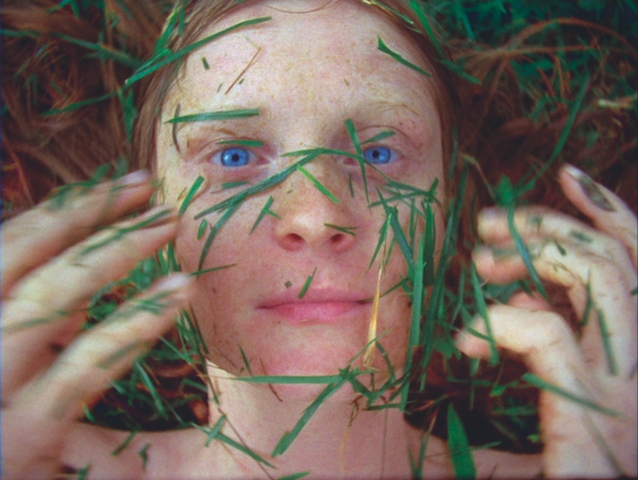I first visited Garden of Earthly Delights with my mother, a professional gardener. She identified the potted plants in Rashid Johnson’s Antoine’s Organ (2016) – a largescale installation made of a black metal structure also hosting four videos playing on small screens, soft shea-butter sculptures of abstract shapes and faceless busts, and various books important to African-American race relations and discourse (W. E. B. Du Bois’s The Souls of Black Folk, 1903, Richard Wright’s Native Son, 1940, and Ta-Nehisi Coates’s Between the World and Me, 2015, among others). Shortly thereafter she stood in awe in front of what appeared to be Hieronymus Bosch’s The Garden of Earthly Delights (which turned out to be a replica made by the School of Bosch around 50 years later, during the mid-sixteenth century) and sat down gleefully on a woven cushion to participate in Zheng Bo’s Fern as Method (2019), which provides visitors with a piece of paper, pencil and clipboard to draw one of the 22 ferns growing in the room. Her fascination with and knowledge of the life surrounding us was impressive, but it remained unclear to me whether the larger interwoven themes addressed by each of these works made an impression – maybe because of her vested interest in plants and gardens themselves, but also perhaps in part due to structural flaws.
The vast majority of the 22 artists and collectives in this sprawling exhibition, curated by the institution’s director, Stephanie Rosenthal, receive their own room, and each can supposedly be located within one (or two) of five thematic areas: ‘Pairidaeza, Paradise, Utopia, Dystopia’, ‘Anthropocene, Chthulucene’, ‘Urban Gardening’, ‘Garden as a System / Structure of Thought’, and ‘Colonialism, Migration, Botany’. Johnson’s installation is slotted into the fifth, the show’s titular work into the first and third, and Zheng’s into the second and fifth. Among his living, drawable ferns are four screens playing Pteridophilia 1–4 (2016–19), which show naked men sensually interacting with ferns in a forest; they moan and pant while devouring thick stems, or lick and caress leaves. On a wall hangs Survival Manual II(Hand-Copied 1945 “Taiwan’s Wild Edible Plants”) (2016), a series of drawings that identify plants normally deemed ‘weeds’ as useful and edible. This collection of works uses plants to form a utopian vision of the human relationship with the natural world, reframing our anthropocentric perspectives to ones that treat plants as living beings worthy of respect.
Elsewhere, Pipilotti Rist’s hypnotic installation Homo Sapiens Sapiens (2005) and Heather Phillipson’s built environment Mesocosmic Indoor Overture (2019) continue this thread. Rist’s kaleidoscopic, colour-saturated film – projected onto an oval screen suspended from the ceiling to be viewed by lying on the ground among a serpentine array of pillows – depicts two nude women as they explore the artist’s Garden of Eden. In this wonderland, no sin is committed; the two Eves are one with nature, no hierarchical status is in play, no temptations nor male figures stand in their way. Meanwhile, Phillipson’s immersive installation is composed of tree trunks supporting speakers disguised as birdhouses, screens and mulch – complete with the stench of manure – carpeting the floor. In three videos, humanoid eyes appear on bright yellow plants that gaze at the fourth, glitched video. In it, fragmented worms compost biodegradable material and excrete humus where seeds can germinate; in this posthuman era, a new kind of life is born, with a mechanic voice in the background reminding visitors that this is a digital scene in a mesocosm of a world in which we, human beings, do not exist.
While other inclusions, such as Tacita Dean’s 28-minute film Michael Hamburger (2007) and Uriel Orlow’s Theatrum Botanicum (2015–18), pick up Johnson’s themes of colonialism, migration and (botanic) displacement, only one work in the exhibition explicitly broaches the topic of urban gardening – and it comes as a shock to the system. Remnants of Victory Gardens, a largescale urban agriculture project carried out in San Francisco from 2007 to 2009 by the organisation Futurefarmers, are presented like a bland scientific archive: photos and explanatory captions sit in a vitrine underneath two large photographs of an action in front of City Hall. In an adjacent room, Lungiswa Gqunta’s Lawn I (2019) – an array of broken glass Coca-Cola bottles fixed on a platform – speaks to the defences surrounding gardens in cities like Johannesburg and Cape Town (literally ‘urban gardens’) as a commentary on South Africa’s race relations: gardens are typically owned by white inhabitants and the broken glass barriers enact violence against the black citizens who dare enter the zones from which they are barred.
Specific works also supposedly fit within ‘Garden as a System / Structure of Thought’, but it’s easy to argue that every artwork in this exhibition proposes a way to see the world anew, a way to restructure our relationship to nature, an alternative to the status quo. Such thematic groupings serve to give the viewer a broad understanding of the subject at hand, but they are also so vast that the definitions, as well as their allegories and overlaps, quickly become muddled, at times even tangential. Instead of the show presenting a maze of forking paths, some of which lead to dead ends, I left wondering: why not focus on two or three central paths lined with benches that allow the visitor to not only stop and smell the flowers along the way, but to stop, sit and also consider the entire garden from within?
Garden of Earthly Delights at Gropius Bau, Berlin 26 July – 1 December
From the October 2019 issue of ArtReview
